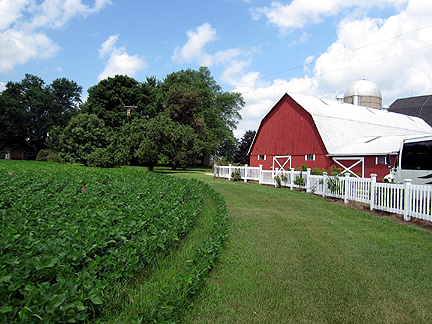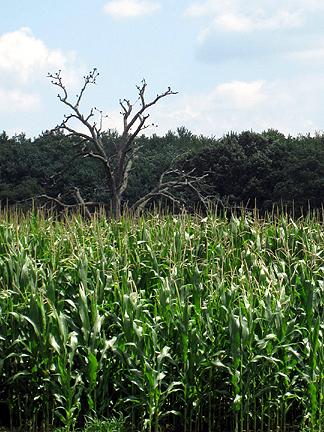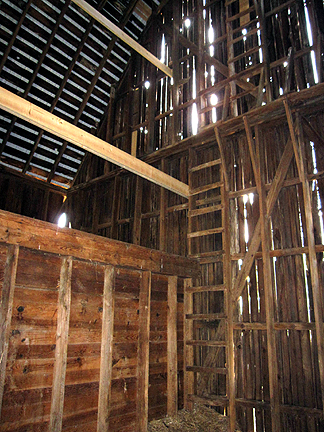Greenbelt tour highlights preserved land
On Saturday, I attended the First Annual Greenbelt Bus Tour sponsored by the City of Ann Arbor's Greenbelt Program. The program has protected 12 working farms and three open-space parks by purchasing property development rights in perpetuity. Landowners retain ownership of the property, and can sell it or leave it to heirs, but it can never be developed.

The Bur Oak Farm in Webster Township grows popping corn and soybeans.
Monica Milla | Contributor
In 2003, Ann Arbor voters passed the Open Space and Parkland Preservation millage to preserve open spaces and parklands within and outside of city limits. The resulting Greenbelt Program focuses on preserving large blocks of farmland (not just a farm here and another there) and land near the Huron River and its tributaries.

An old bur oak stands in a field of popping corn at Bur Oak Farm. The huge trees provided shade for farmers and animals needing to rest.
Monica Milla | Contributor
On Saturday, we toured four preserved sites: three farms and an open-space park. The first stop was a conservation easement belonging to Don Botsford in Scio Township. Ten of the 20 acres of property are open to the public in the form of wooded hiking trails. Conservation easements are normally private property, but as Botsford says, "Why not share? A sunset isn't nearly as pretty if you watch it all by yourself."
The second stop was the Nixon Farm in Webster Township, which at 265 acres is the largest site in a block of protected farms in the area. At one point, 300 homes were planned to be built on this site, but all I could see on Saturday were cornfields.
The third stop was the Bur Oaks Farm in Webster Township. The owners, Tom and Rosanne Bloomer, grow popping corn and soy beans. Tom stressed the importance of creating value-added products as a way to support local farming.

This Ann Arbor Township barn was built from a kit.
Monica Milla | Contributor
The Small Farm Initiative is working to apply development rights to small farms that don't currently qualify for federal funding, to encourage owners of land to sublease plots to small farmers, and to promote farming on land that's currently under conservation but is not being used to grow produce.
Despite the sweltering heat and humidity of the day, it was interesting seeing these sites and learning more about them.
Monica Milla, the Garden Faerie, is a master gardener volunteer, garden speaker, garden coach, and author of "Fun with Winter Seed Sowing."


Comments
Monica Milla
Wed, Aug 4, 2010 : 11:17 a.m.
If you'd've been there, I'm sure you would have gotten a better light setting!
Ramon
Tue, Jul 20, 2010 : 2:48 p.m.
That barn is really cool.